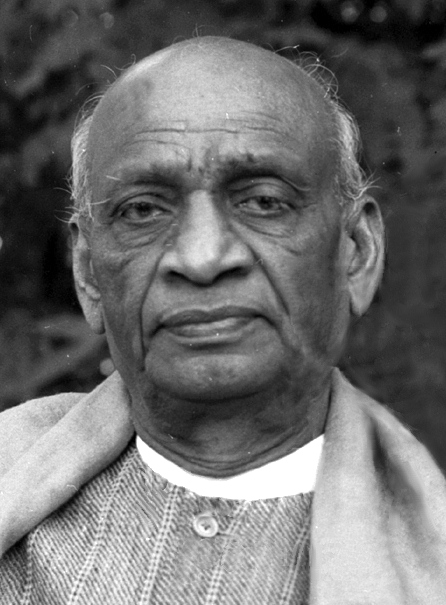Important Facts For Prelims
National Unity Day 2022
- 31 Oct 2022
- 6 min read
Why in News?
On National Unity Day 2022, the Union Home Minister of India remembered Sardar Vallabhbhai Patel on his 147th birth anniversary saying that the latter realised the dream of a strong and united India with his farsightedness.
Why is National Unity Day Celebrated?
- National Unity Day is celebrated every year on 31st October to commemorate the birth anniversary of Sardar Vallabhbhai Patel. It is also known as Rashtriya Ekta Diwas.
- The reason behind the celebration of this day is to make people aware of the ideas of staying together and uplifting society.
- It was celebrated for the first time in 2014.
- Several events are organised on this day like ‘Run For Unity’ - a nationwide marathon to increase awareness about the contribution of Sardar Patel to national integrity, National Unity pledge, etc.
- In 2018, the Government of India unveiled the ‘Statue of Unity’ in Gujarat to mark the 143rd birth anniversary of Sardar Patel.
- The Statue of Unity is the tallest statue in the world. At 182 meters, it is 23 meters taller than China's Spring Temple Buddha statue and almost double the height of the Statue of Liberty (93 meters tall) in the US.
- In January 2020, it was added to the ‘Eight Wonders’ of the Shanghai Cooperation Organization (SCO).
Who was Sardar Vallabhbhai Patel?
- About:
- He was born on 31st October 1875 in Nadiad, Gujarat.
- Sardar Patel was the first Home Minister and Deputy Prime Minister of India.
- He is recognized as the real unifier of India for his colossal contribution to integrate and make India a united (Ek Bharat) and an independent nation.
- He requested the people of India to live together by uniting in order to create Shresth Bharat (Foremost India).
- This ideology is still reflected in the Atmanirbhar Bharat initiative which seeks to make India Self-Reliant.
- He is also remembered as the ‘Patron saint of India’s civil servants’ as he established the modern all-India services system.
- Role in Framing Constitution:
- He headed various Committees of the Constituent Assembly of India, namely:
- Advisory Committee on Fundamental Rights.
- Committee on Minorities and Tribal and Excluded Areas.
- Provincial Constitution Committee.
- He headed various Committees of the Constituent Assembly of India, namely:
- Major Contributions:
- He worked extensively against alcohol consumption, untouchability, caste discrimination and for women emancipation in Gujarat and outside.
- He integrated the farmer’s cause in Kheda Satyagraha (1918) and Bardoli Satyagraha (1928) with the national freedom movement.
- Women of Bardoli bestowed the title ‘Sardar’ on Vallabhbhai Patel, which means ‘a Chief or a Leader’.
- During the 1930 Salt Satyagraha (prayer and fasting movement), Sardar Patel served three months imprisonment.
- In March 1931 Patel presided over the Karachi session (46th session) of the Indian National Congress which was called upon to ratify the Gandhi-lrwin Pact.
- Integration of the Princely States:
- Sardar Patel played a key role in the integration of about 565 princely states into the Indian Union.
- Few princely states like Travancore, Hyderabad, Junagadh, Bhopal, and Kashmir were averse to joining the state of India.
- Sardar Patel worked tirelessly to build a consensus with the princely states but did not hesitate in employing methods of Sama, Dama, Dand and Bhed wherever necessary.
- He had used force to annex princely states of Junagadh ruled by Nawab and Hyderabad ruled by Nizam, both of whom had wished not to merge their respective states with the Union of India.
- Sardar Vallabhbhai Patel stitched the princely states along with British Indian territory and prevented the balkanization of India.
- He is known as the “Iron Man of India” for playing an important role in unification and integration of Indian princely states into the Indian federation and for convincing princely states to align with the Indian Union.
- Sardar Patel played a key role in the integration of about 565 princely states into the Indian Union.
- Death:
- 15th December 1950 in Bombay.
UPSC Civil Services Examination, Previous Year Questions (PYQs)
Prelims:
Q. Who among the following were official Congress negotiators with Cripps Mission? (2010)
(a) Mahatma Gandhi and Sardar Patel
(b) Acharya J. B. Kripalani and C. Rajagopalachari
(c) Pandit Nehru and Maulana Azad
(d) Dr. Rajendra Prasad and Rafi Ahmed Kidwai
Ans: (c)
Q. For the Karachi Session of Indian National Congress in 1931 presided over by Sardar Patel, who drafted the Resolution on Fundamental Rights and Economic Programme? (2010)
(a) Mahatma Gandhi
(b) Pandit Jawaharlal Nehru
(c) Dr. Rajendra Prasad
(d) Dr. B. R. Ambedkar
Ans: (b)





